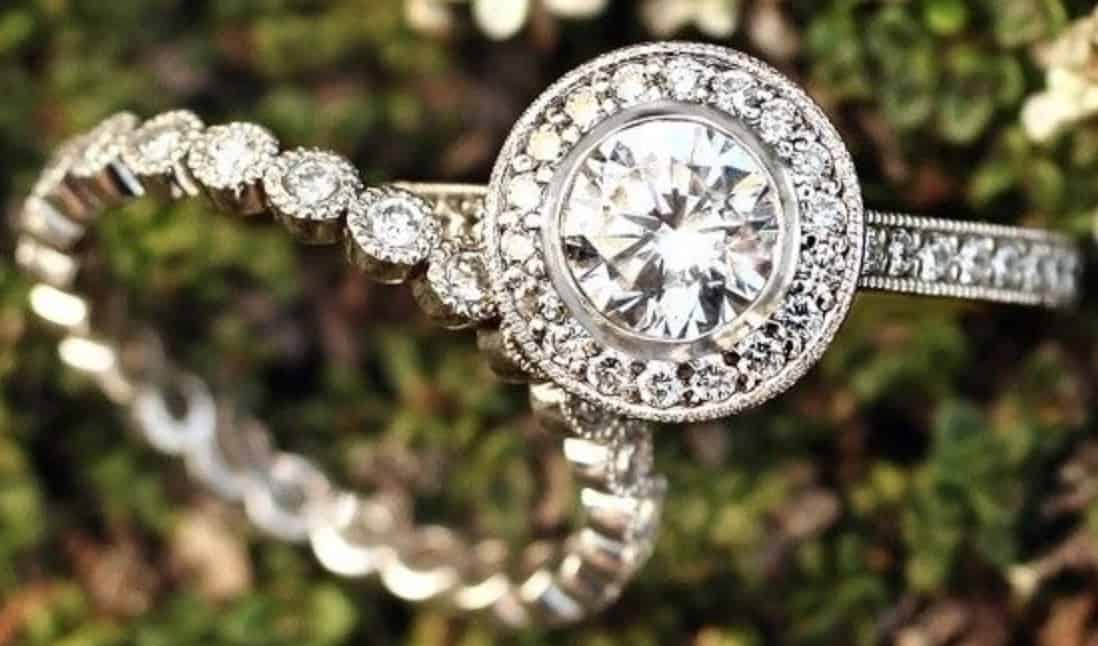Brilliant Earth has made a name for itself in the world of fine jewelry by touting its commitment to ecologically friendly practices and diamonds that are “beyond conflict-free.” It is easy for a company to make grand claims about their origins, so how do consumers know whether they are getting rebranded diamonds from conflict zones or diamonds that are genuinely conflict-free?
What are conflict diamonds
To understand the claim of “beyond conflict-free,” made by Brilliant Earth, we first have to understand what conflict diamonds are. Diamonds have a long and sordid history of being mined in countries where the money from the precious gems is used to fund rebel and terrorist causes, creating problems for legitimate governments and the people who live around the mines. These people are often forced to mine the diamonds under extreme duress and kept in horrific poverty.
Rebel forces use the money made from the forced mining practices to buy weapons and fund military actions against both governments and the people who support them. These diamonds are often mined in dangerous, brutal conditions where men, women, and children are forced to work long, brutal days for little or no pay. It amounts to little more than modern-day slavery.
The conditions above are what led to the coinage of the phrase “blood diamonds.” Responsible jewelers around the world decided to adopt a means policy of purchasing “conflict-free” diamonds, with a standard definition. The Kimberly Process, developed in Kimberly, South Africa in 2000, is a means of determining whether diamonds are conflict-free.
The definition is quite simple. Conflict diamonds are diamonds used to finance rebel uprisings against governments recognized as legitimate. While it is a start, Brilliant Earth thinks it is not enough. The accepted definition of conflict-free does nothing to counteract human rights abuses, nor does it require that diamonds be traced to their mine of origin.
The hope was that the Kimberly Process would be adopted by legitimate jewelers around the globe, reducing the value and the ability to sell conflict diamonds. Unfortunately, the world’s diamond trade is enormous, and it is far too easy to pass diamonds mined by rebels into the supply chain. Until the Kimberly Process is adopted by every legitimate jeweler and encompasses a system for tracking each diamond from the mine to final sale, it is not enough to stop the trade of illicit diamonds from conflict zones.
Beyond conflict-free
Exceeding industry standards for fine jewelers, Brilliant Earth offers diamonds that have a listed origin of Botswana, Russia, or Canada. The diamond suppliers from these regions must adhere to a strict chain of custody protocol to meet the rigorous standards of Brilliant Earth.
Brilliant Earth also uses cutting-edge blockchain technology to trace each diamond from its mine of origin to the end consumer. Blockchain technology helps to limit, if not eradicate, the number of diamonds that can find their way from conflict zones into the legitimate supply chain.
For part of its collection of diamonds, Brilliant Eart includes a GIA Diamond Origin Report. These reports use scientific analysis such as spectroscopic data and imaging of the diamond before it is cut and polished. A unique identification number is given to the rough stone and is later matched to the finished product. This process helps ensure that the diamond you are wearing comes from the mine listed on the GIA report.
Brilliant Earth also uses lab-created and recycled diamonds, which have no potential for human rights abuses. Using lab-made diamonds and recycled diamonds, gems, and precious metals require no new mining, which is kind to the environment. You will also find an extensive collection of vintage jewelry sold by Brilliant Earth. Instead of using any environmental resources to recycle and reclaim gems and precious metals, vintage jewelry is cleaned, restored, and sold in their original state.
Few fine jewelers go to the lengths of Brilliant Earth to ensure that the diamonds they sell are, in truth, conflict-free in every sense of the phrase. The company is socially responsible in ethical sourcing and protecting against the human rights abuses that are far too common in mining for precious and semi-precious gemstones.
Brilliant Earth also has an impressive history of giving back to mining communities through educational initiatives that help break the cycle of poverty that is predominant in mining areas. They have also established a program that allows restored mining ground to be used, once again, for agricultural purposes.

